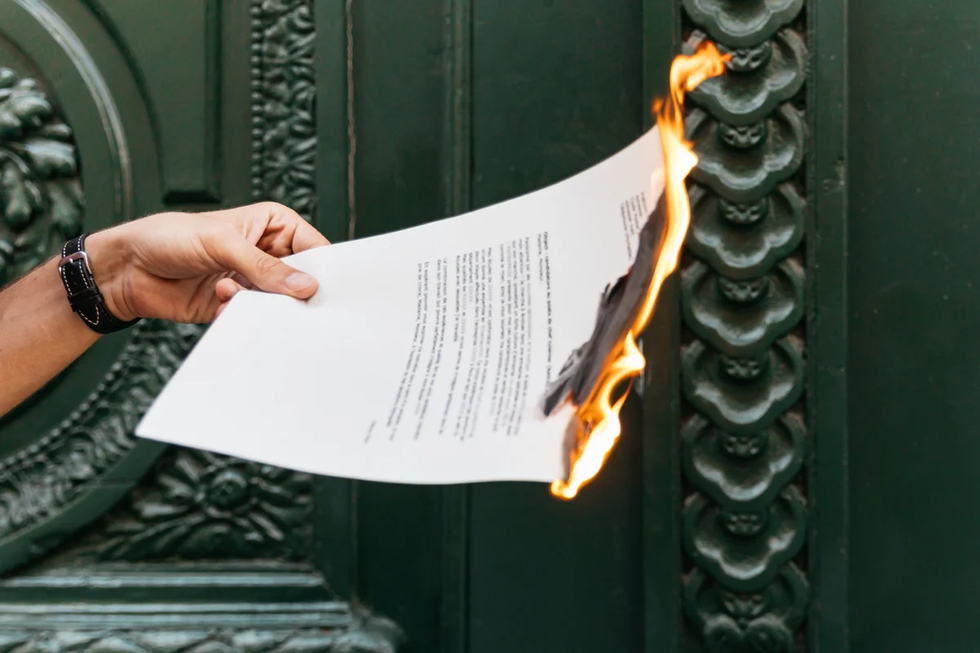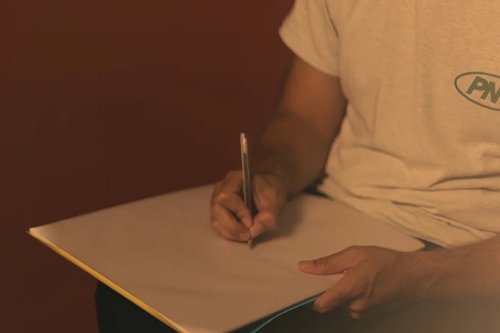Writing a cover letter: ditch the dull templates!
Jul 12, 2022
5 mins

“With three years’ experience in sales, I’m excited to apply for the role of …” You’ve ticked all the boxes: introduction, description, conclusion, all in a nice polite formula. “I look forward to hearing from you soon. Yours sincerely.” Simple, yet effective. You wanted to be sure you got it right, so you searched up cover letters on the internet, asked a friend who’s just landed a great role to send you their most recent one, and ran around getting all the best tips. You feel pretty good about your application, but is it going to make you stand out from the crowd? I’m an HR Manager and to be honest, your chances are slim.
This article is a plea for more spontaneity in your job applications. It’s high time we ditched the over-used structures and templates! It’s time to tell your story.
Boring, boring, boring
If writing and re-reading your own cover letter feels dull, imagine the poor recruiter reading one after another. If you’ve ever yawned your way through a friend’s cover letter as a favor and never quite made it to the end, then you know what I’m talking about. When all these letters look the same and have the same ‘perfect’ structures it’s just so boring. “Dynamic, motivated, serious…” as if anyone’s going to write that they’re, “dull, unmotivated, and untrustworthy.” Recruiters are left drowning in the piles of letters and sinking into oblivion.
It’s a classic dilemma: you’re looking for work, you’re scared of getting things wrong, so you get a template and modify it. You change a few words here and there. You add the company name and alter the locations and skills as if you’re completing a fill-in-the-blanks exercise in a kid’s workbook. And you churn out a letter, just like every other cover letter that was ever written. It might not go against you, but it definitely won’t help you stand out from the crowd!
If you want to make sure you’re neither banal nor boring, put yourself in the shoes of the person who’s going to read your letter. You might want to start with a blank page and jot down your ideas as they come to you, use your own words to explain who you are, why you’re applying, and why you think the job is interesting. There’s no point in going searching for templates if you already have all the information you need! Be wary, avoid structures and expressions that add no specific or personal information, and could have been written by just about anybody. For example, when you write “I’m writing this cover letter as I’m currently looking for work and I’m really interested in the role on offer.” You’re not giving any important information. There’s nothing to attract a recruiter. But if you put yourself forward right from the start, you’ll spark the recruiter’s curiosity. Maybe you discovered the company at a conference you went to, or you’ve worked for a competitor or been fascinated by the industry since you were a kid.
If you’re struggling to step away from typical wording, try speaking it first. You could record yourself, for example, or write it down as you would say it. It can help to keep things natural and direct and is much more sincere than well-worn templates. You might end up using more simple words, but at least they’ll be yours!
Tell your story
Above all, the recruiter wants to get to know you, they need to figure out your personality and see if you’ll fit into the role, team, and company. If your application is your first point of contact, then your cover letter and resume are two ways of creating the first impression and allowing them to get to know you. By using a copy-paste-style cover letter, as eloquent as it may be, the only impression you’re creating is “groundhog day!”
No one’s going to blame you for trying to stick to the rules of the cover letter game, but if you don’t put a bit of yourself in there, it’s game over, the template says nothing about you. And worse still, it makes you look like a school kid who can’t do their own thing, or doesn’t really care and is simply chain-writing cover letters with no conviction or motivation … the complete opposite of what you’re aiming for!
Take a risk and showcase your style, opt for simple phrases over pompous, overly formal expressions. After all, it’s about you telling a story, your story, the one that’s led to you applying, so why not add a few personal anecdotes and start to create a connection? Here’s an example. “Last year, I had a lightbulb moment. I didn’t want to work in companies that didn’t care about protecting the planet. So, when I saw that an eco-friendly company like yours was recruiting, I had to apply.”
This is your chance to explain your career history, why you’ve worked in specific industries, companies, and areas. Dare to let them see who you are, but avoid any tear-jerking stories. Your cover letter should be a reflection of you, be sincere and spontaneous, You’ll be much prouder and more convincing!
Answer their questions
Keep cover letters on point: a cover letter should showcase why you’re applying. Some companies have now introduced video applications or asked candidates to reply to specific questions online just to make sure they have this information from the get-go.
It’s surprising that as recruiters are looking for originality, more and more cover letter templates are appearing online and standardizing applications. “10 original cover letters,” “The best templates for writing your cover letter,” and so on. New pay-to-access models appear every day, but all of them have something missing. They concentrate on how to write your cover letter rather than what it should contain. Why are you attracted to the job? What’s the why behind your application? The answer can only be individual, unique, and personal.
Before you write anything, ask yourself the following:
- Why do you want this job? You’re looking for a job, and the role looks good, but why? What motivates you about the company? What’s good about it? What about this job will bring you joy? Why does it fit with your profile?
- How is the role a good fit for you? What do you think you can bring to the company? What do your previous managers and colleagues or your friends and family say about your qualities? How can you demonstrate your successes? And even your mistakes? Don’t scrimp on the details.
Once you’ve answered these questions, you can start writing! If it helps, use your voice again and say it out loud, as if you were presenting to someone. Go for it, but do it as you! If you’re not feeling inspired, then just stick to the point, a cover letter shouldn’t be longer than one page.
Although a cover letter can be important for creating an initial impact, don’t be scared of it. Formal cover letters may have been around for a long time, but like many areas of work-life, the rules are changing and giving way to a more relaxed approach. Writing with more freedom and flexibility will show your unique talents. Just don’t forget about spelling and grammar. There’s no miracle recipe, but the emphasis should be on what you’re trying to say, so get to the point and show off your personality.
Translated by Debbie Garrick
Photo: Welcome to the Jungle
Follow Welcome to the Jungle on Facebook on LinkedIn and on Instagram and subscribe to our newsletter to get our latest articles every day!

More inspiration: Creating a winning job application
Create a winning job application with these tips on resume and cover letter writing, job application strategies, and job application best practices.

Resume writing: 7 details to include before you shoot your shot
You've found the ideal job ad and are ready to apply—that's great! But before you hit "send," make sure you've got these key details on your resume.
Feb 07, 2023

The language of the job hunt: resumes and job applications
It can take some time to master the vocabulary of the job hunt. What do these terms mean and what's the difference between them? Let's find out.
Sep 07, 2022

The power of words: elevating your resume to promote your experiences
Good words are worth much and cost little. So how can you use them effectively on your resume to catch the attention of the recruiter?
Jun 30, 2022

Maximizing your resume's impact: aligning your skills with job descriptions
By tailoring your resume and cover letter to each job offer, you're more likely to attract the recruiter's attention.
Jun 23, 2022

Crafting a compelling cover letter for hidden job opportunities
You've found your dream company. But there are no open positions. Should you give up? No! Use these tips to write a strong unsolicited cover letter.
Jan 07, 2020
The newsletter that does the job
Want to keep up with the latest articles? Twice a week you can receive stories, jobs, and tips in your inbox.

Looking for your next job?
Over 200,000 people have found a job with Welcome to the Jungle.
Explore jobs
